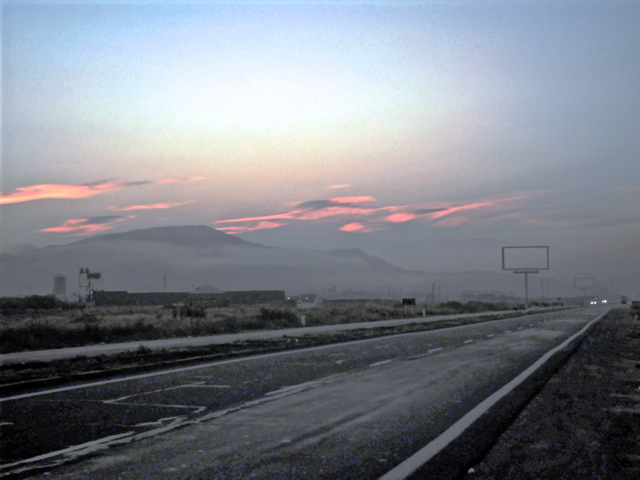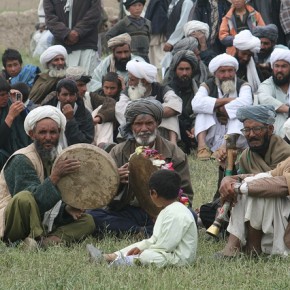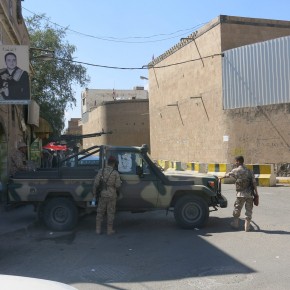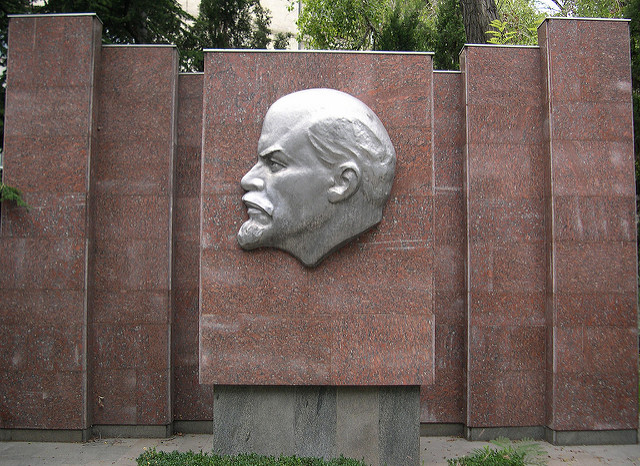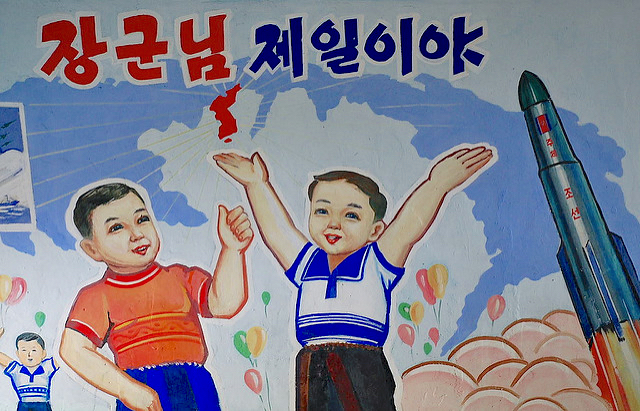“I’ve driven to Yeraskh more times than I can count,” says Artash, Yerevan veterinarian and part time tour guide. “It always amazes me.” Mount Ararat, on one of those crisp Armenian autumn days, is visible from the city’s centre. Cynics might, and do, see it as Turkey looming over what remains of the Armenian state. In any case, Artash points out, from the Turkish (or Western Armenian) side, Ararat is not quite as magnificent.
The Turks and Kurds on that side of the border, allegedly, enjoy just a steeply rising, snowy plain. You can savor the view of Ararat with an Akhtamar cigarette, some Ararat brandy (the quality of which seems to rise with the significance of which ruined Armenian capital appears on the label,) and try not to get too overwhelmed with the rich choice of metaphors. One popular anecdote relates a dispute between Khrushchev and a Turkish ambassador, offended that the arms of the Armenian SSR bore the image of Ararat, in Turkish territory. Turkey, retorted Khrushchev, did not control the moon, so by what rights did its flag depict it?
The Ararat Valley is a significant stretch of the 268 kilometre Armenian-Turkish border, patrolled by Russian guards and the Caucasus faultline between NATO and the CSTO. Armenia’s ancient capital of Ani, tantalisingly out of reach, lies on the Turkish side of this border, far to the north-west of Yerevan. Visit Ani from Kars, and an SMS from a transmitter tower somewhere in Shirak Province will greet you with a “Welcome to Armenia” message.
Some of the finest views of Ararat can be enjoyed from Khor Virap Monastery. Some of the finest views of curious tourists can be had, presumably, from Turkish watchtowers on the other side. The inhabitants of Turkish Halikislak and Armenian Bagaran can see each other daily from afar, but may not communicate. Despite a brief interlude between 1991 – following Turkey’s recognition of Armenian independence – and 1993, following the passing of UN Security Council Resolution 822, this border has remained closed. Uniforms may have changed, but this is a long-lived status quo.

“Existing official discourse on conflict resolution,” noted the RSC and Konrad Adenauer Stiftung’s South Caucasus 2018 report “is often based on the assumption that the governments of the countries involved are genuinely interested [in it]. This assumption in turn stems from the notion that the interests of the country […] are mostly consistent with the interests of the ruling elite.” Richard Beilock of the University of Florida estimated that if Armenia’s closed borders were reopened, transport costs between Armenia and Turkey would fall by between thirty to fifty percent. Armenia’s GDP would rise by some 180 million US dollars.
Along the entirety of its 1,254 kilometre border, landlocked Armenia’s few open border crossings (excluding its two international airports in Yerevan and Gyumri and those with unrecognised Nagorno-Karabakh) are with Georgia and Iran. “Closed borders,” continues the RSC’s report “may be useful for so called oligarchs, who control certain spheres of export and import.”
As we turn to the east shortly before Yeraskh, on the only open road to Armenia’s far south, traffic is shielded from the south by a large earth mound running parallel to the road. Beyond these mountains lies Nakhichevan, an Azerbaijani exclave and its only border with Turkey. This is a long detour compared to the Soviet-era road via Nakhichevan and Ordubad. “They can’t get past Yeraskh, the Turks,” muses Artash (Turk used interchangeably for both Turks and Azeris) “not after everything they’ve taken.”

Pass Tigranashen (formerly the Azeri village of Kərki, and, cut off from Nakhichevan, an exclave of Azerbaijan,) and eventually one reaches Armenia’s most sparsely populated province, Vayots Dzor, or in English, Valley of Woes. Passing the towns of Yeghegnadzor, Vayk, Zaritap and the sparsest populated village of all, Kapuyt, a mountain road eventually reaches the villages of Martiros, new and old. A bright red and newly reconstructed Armenian church stands at the centre of the village, as does an immense leaning Khachkar, erected by a certain Prince Proshian in the thirteenth century. A few metres away from the village square, the face of a goat, chewing lazily, appeared at a barred window. A few seconds later, another face- also bearded- appeared. I greeted him. Davit Hokmeryan took the scythes out of the back of his Moskvich and showed me the way to Martiros’s older church, further into the mountains.
The way there involves driving over fields, through shrubbery, and an involuntary bath in a mountain stream. Broken Khachkars and a cliff face with a small wooden door in it mark the end of the road, if one could call it that. A small hole at the top of an octagonal dome carved from the rock affords a little light. With a camera in one hand and a candle in the other, the interior is just about visible. Davit crosses himself and places his candle on the remains of the altar. Now we are left in darkness, and he begins to reminisce. His Russian is poor, my Armenian is non-existent, and hand gestures are lost in the darkness. We walk out of the cliff, back into the sunlight, and he points at one of the mountains ahead. Ten to fifteen kilometres that way lie both Nakhichevan and, presumably, both Armenian and Azerbaijani soldiers.
Did he know any Azeris? “Yes, a few lived in this area. In Soviet times, villagers had some contact with the Azeri settlements across the mountains, though they haven’t seen each other for twenty years.” “Some Azerbaijanis,” he adds, “crossed into Armenia and hid in Armenian villages, until police found them and sent them to prison in Yerevan.” Was this during the Soviet era, or following Armenia’s independence? Davit doesn’t say, although four walls of concrete are much the same in either era.
“When war began,” he explains, brandishing a rifle of unknown calibre (hand gestures are visible – and crucial – now,) “an Armenian machine gunner climbed on top of this mountain and fired round after round into the air to let the villagers know to flee their homes. Azerbaijani soldiers shot him.” Davit puts down the rifle, and we are at peace. On the drive back to Martiros village, we bathed (again) and I asked Davit about himself. How many children did he have? What did he work in? He answers the former with a number and the latter with a bitter laugh. “Work!”
It is late evening when we reach Meghri, the last town before Armenia’s border with Iran. Armenians and Iranians alike regularly make the border crossing across the Aras River, but for me the next step, after a few days, is the return to Yerevan. For some reason, I am reminded of a colleague’s words as we discussed Britain and Armenia, one surrounded by seas and the other, to a large part, by enemies. “We have no coastline, but Armenia is also an island.”
Photographs I and III courtesy of the author. Frontier sign photo courtesy of ale_speciale. Published under a Creative Commons license.
